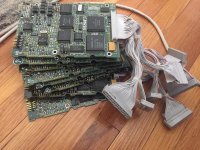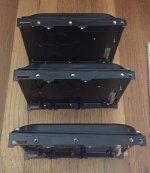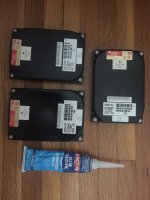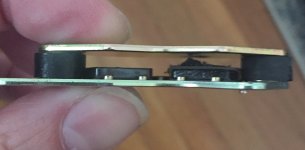aplmak
Well-known member
Ok so I have 3 working drives.. I de-gooed them and sealed them with some good silicone adhesive. They are in perfect shape. The problem is the boards... I've got a pile of connor hdd boards that are bad... I assume it was during when people tried to fire them up while capacitors were leaking everywhere and it did something to a chip on the hdd boards. If I swap boards from a good unit it they power up and run just perfectly fine. If I only knew what to fix on this pile of bad connor CP-3045 hard drive controller boards........


Last edited by a moderator:



